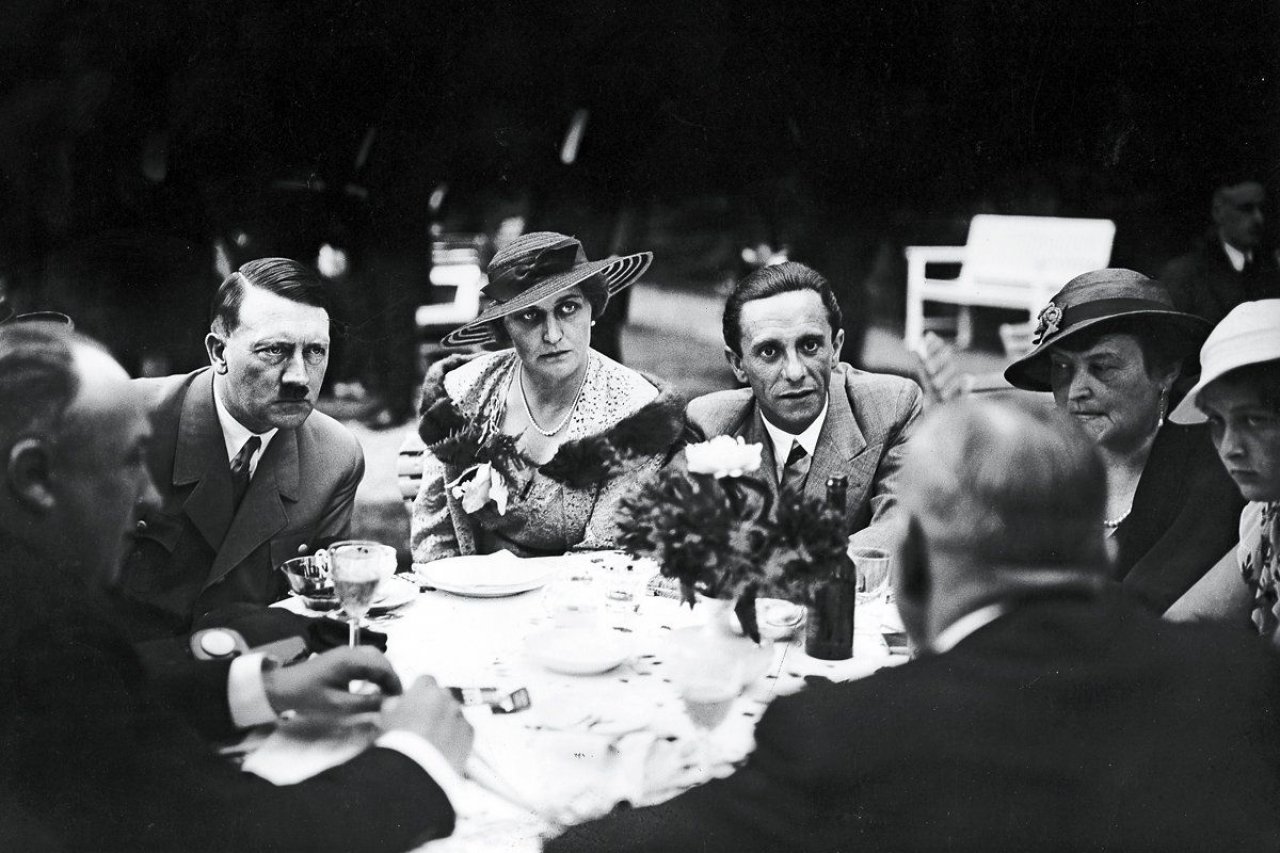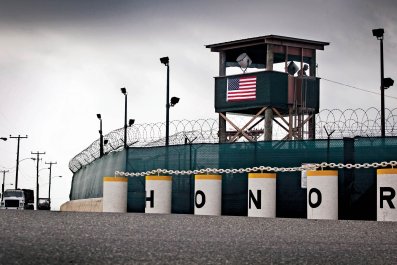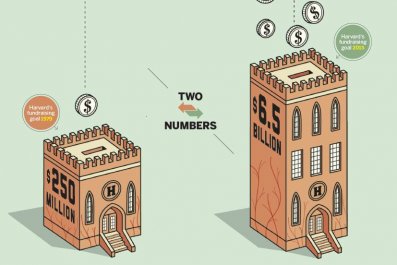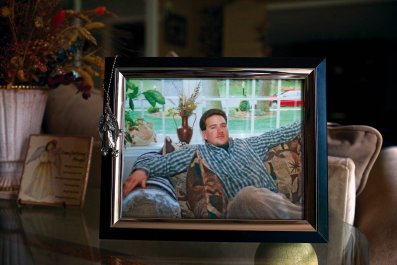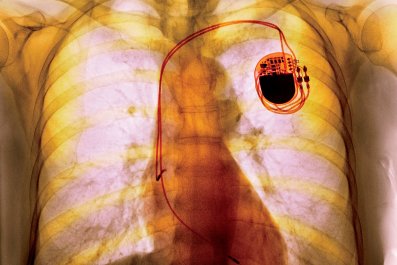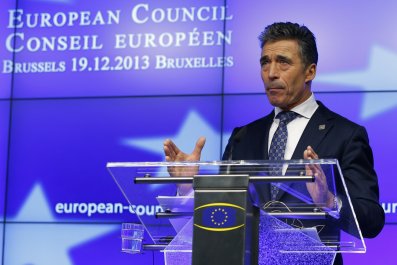On July 20th this year, President Joachim Gauck of Germany led the country's political elite in commemorating the 70th anniversary of the best-known assassination attempt on Adolf Hitler, in 1944. The plot's leader, Colonel Claus Schenk von Stauffenberg (played by Tom Cruise in the movie Valkyrie), put a briefcase containing a bomb underneath Adolf Hitler's table at the Führer's headquarters in East Prussia. The bomb exploded, but Hitler sustained only minor injuries. Von Stauffenberg, who initially believed that Hitler had been killed and had made his way to Berlin to lead the coup, was summarily shot, along with three other participants at the Bendlerblock, the then-military headquarters now housing the Ministry of Defence, where this year's commemoration ceremony took place.
Almost all the other members of the July 20th plot – officers, jurists, trade unionists, clergymen, diplomats – were also executed. Had the assassination succeeded, the plotters had planned to overthrow the regime, arrest leading Nazis, liberate the concentration camps, establish the rule of law, and negotiate peace with the Allies.
Today, the 200 or so participants of the plot are treated as heroes. But for a long time they were considered traitors. Dr. Axel Smend, a corporate lawyer, recalls how his mother was often called in to meetings with his teachers because of his and his siblings' poor grades. "Once," recalls Smend, "she mentioned to my maths teacher that my father had been a member of July 20th. 'Well, then it's no surprise that he's bad at maths', my teacher responded. 'He's the son of a traitor.'"
Smend's father, Günther Smend, was 31 when he was hanged at Berlin's infamous Plötzensee prison, strung up from a meathook and condemned to a slow and painful death for the crime of having tried to recruit his superior to the plot. Hitler's command was that the plotters should be killed like animals. The plot had been carried out by "a tiny clique of criminals who will now be exterminated," the dictator raged on national radio. Some 88 other July 20th participants suffered the same fate as Günther Smend at Plötzensee, while several dozen others were executed in concentration camps. A few lucky ones awaiting their execution were saved only by the arrival of the Allies.
Smend, who was four months old when his father died, sheds a tear as he recounts the painful meeting with his teacher, one of many indignities that Smend's 26-year-old mother and her three young children underwent. Neighbours avoided the family; "traitor widows" were, a court later decided, not eligible for the pension every other war widow received. Renate Smend didn't discover that her husband had been executed until the postman delivered a small package containing Günther's wedding ring, a notebook he'd kept at Plötzensee, and the bill for his execution. "It wasn't until my mother took me to Plötzensee when I was nine that I understood how my father had died," Smend says.
Had the plot succeeded, Ulrich von Hassell would have become Foreign Minister. The veteran diplomat, a friend of Mussolini's who had been Germany's ambassador to Italy in the early 1930s but was dismissed by Hitler, envisioned a Europe of shared values. Instead, he too was hanged.
Von Hassell's grandson, Corrado Pirzio-Biroli, recalls an incident relayed to him by his grandmother: "My grandfather had heard about this new agitator Adolf Hitler, and in 1928 he went to see him to find out who he was. Hitler was famous for staring at people, so he stared at my grandfather. My grandfather stared back. That's how the meeting ended, with not a word being spoken. Afterwards, my grandfather wrote to my grandmother: 'If this man comes to power, it's the end of Germany'."
Pirzio-Biroli, born to von Hassell's daughter Fey and her Italian husband Detalmo, still remembers the plot's failure: Fey von Hassell was arrested and little Corrado and his brother Roberto, then aged three and two respectively, were sent to an orphanage in the Tyrolean town of Hall. Their fates were common enough. The regime tended to arrest the wives and older children of plotters, while younger children were sent to orphanages for subsequent adoption by 'reliable' families. Corrado and Roberto were renamed von Hof. "We had been adopted by an Austrian family when my grandmother von Hassell managed to track us down," recalls Pirzio-Biroli. "So before I was proud of my grandfather, I was proud of my grandmother, because she saved us." Today Pirzio-Biroli, who identifies as Italian and German in equal measures, takes great comfort in the efforts of his grandfather.
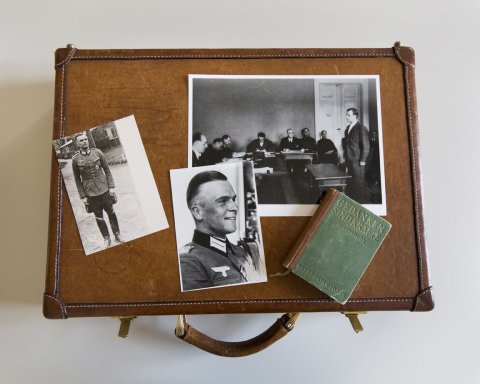
IF WE SHOULD FAIL
Outside Clarita Müller-Plantenberg's Berlin home, children of different ethnicities are playing in the park. This is the kind of Germany for which Müller-Plantenberg's father fought. Adam von Trott zu Solz, born into a distinguished family that included John Jay, the United States' first Chief Justice, was a cosmopolitan young lawyer who had also read politics, philosophy and economics as a Rhodes scholar at Oxford University.
In 1939, von Trott travelled to Britain with secret information about Hitler's military plans, hoping to persuade the British government to prevent a war. Later, his crucial role in the July 20th attempt included trying, without success, to win British support for the assassination. "The British government dismissed the plotters as just dissidents," says Richard Evans, Regius professor of History at Cambridge University and a leading authority on World War II.
"From its point of view, the war was not about concentration camps but about German efforts to dominate Europe. The plotters wanted to keep Germany a major power in Europe, and Britain wanted to prevent that."
Von Trott, says Müller-Plantenberg, knew that the plot could fail. "He always told my mother, 'If something goes wrong, please tell the world about us'." The widows tried, but even after the war many ordinary Germans considered the July 20th members traitors. In a 1951 survey, only 43 percent of men and 38 percent of women had a positive opinion of them, and in a 1956 survey a mere 18 percent of the respondents approved of naming a school after von Stauffenberg or the civilian leader of the plot, former Leipzig mayor Carl Friedrich Goerdeler. A planned law granting the plotters' widows pensions was never introduced, although, as a compromise, the families eventually received an annual sum. Amid such disapproval, one of the few conspirators who had escaped the gallows, a young lawyer named Fabian von Schlabrendorff, took on the thankless task of shoring up support for the shunned families. "He received death threats until his death [in 1980]," recalls his son Jürgen-Lewin, a banker. "Germany had lost the war but Nazism still permeated the country."
Von Schlabrendorff, who had been a member of the resistance since 1933, was involved not only in the July 20th plot but in an earlier assassination attempt on the Führer as well. A year earlier, in a plan that seemed foolproof, he had given an officer travelling with Hitler a bomb disguised as some cognac bottles. Inexplicably, the bomb failed to explode. Though he risked being discovered, von Schlabrendorff travelled back to retrieve the bomb, and returned with it to Berlin, knowing that it might yet explode.
The failure of the July 20th plot meant certain death for von Schlabrendorff. Roland Freisler, the exceptionally sadistic judge at the "People's Court" that handled political cases, was known to deliver death sentences with incredible speed: three to four per day, followed by swift execution. Propaganda Minister Joseph Goebbels planned to make a film of the July 20th trials, but when he saw the dignified behaviour of the accused, he decided against the idea. Harrowing snippets of the trials can still be viewed online.
Between 1942 and 1945, Freisler sent not just the July 20th plotters but a total of 3,600 individuals convicted of politically motivated crimes to the gallows. On February 3rd, 1945, von Schlabrendorff was in the midst of receiving his death sentence when an American bomb caused a beam to fall on Judge Freisler, instantly killing him. The severely-tortured von Schlabrendorff was sent to a string of concentration camps; he was later liberated by American soldiers.
Yet at home, von Schlabrendorff rarely spoke about his ordeal. "He wanted to shield us from his experiences," explains Fabian Jnr, Jürgen-Lewin's younger brother and a lawyer. "And all his friends had been executed. Besides, every time he spoke about what had happened, he felt sick."
In the Gestapo's Prinz-Albrecht-Strasse prison in Berlin, the father of three had been subjected to an induced heart attack. "As a result, his health was always precarious," recalls the eldest brother, Dieprand, who is also a lawyer. "But we never doubted that he did the right thing. And when the July 20th families got together, we were always the privileged ones, because we were the only ones with a father."
Luitgarde von Schlabrendorff gave birth to Fabian Jr. during her husband's Gestapo incarceration.
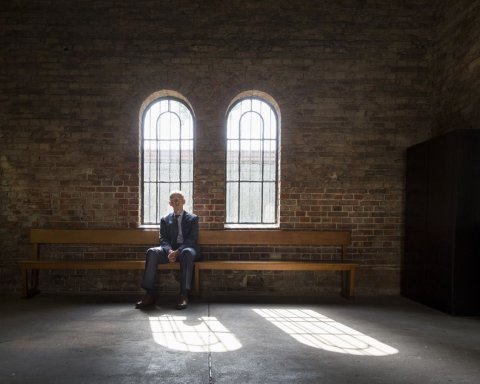
OFFICERS AGAINST HITLER
It's largely thanks to Fabian von Schlabrendorff's efforts that the July 20th plotters were not lost in the collective post-war amnesia. Officers against Hitler, published in 1959, was von Schlabrendorff's tribute to his executed friends and perhaps also a form of self-therapy in an era that long preceded the recognition of post-traumatic stress disorder.
But while von Schlabrendorff, von Trott and others such as Hans von Dohnanyi had been early foes of the Nazis, other plotters joined the resistance much later. "Initially my grandfather was a committed Nazi, no doubt about it," explains Robert von Steinau-Steinrück, sitting in the execution chamber at Plötzensee, where his grandfather was hanged. "He wasn't exactly a democrat, but as time went by, he realised that the Nazis were criminals. For him, it was a matter of the rule of law."
Von Steinau-Steinrück's grandfather, reserve officer Fritz-Dietlof von der Schulenburg, was a government official in eastern Germany who joined the resistance after witnessing the Nazi regime's crimes. Had the plot succeeded, he was supposed to become Minister for the Interior. "For him, acting against Hitler was a matter of decency," says von Steinau-Steinrück, one of Germany's top labor attorneys. "The plotters could have decided to do nothing, saved their life and played a positive role in postwar Germany. But they knew that somebody had to do something."
What the July 20th plot has done, reflects von Stauffenberg's granddaughter Sophie Bechtolsheim, is show that there was another kind of Germany. "Otherwise, how would we be able to look the victims of the Nazi regime in the eyes?" she asks. "We can learn [from the plotters] that taking a stand and taking the resulting action is not just necessary but possible."
The conspirators, however, faced a conundrum: not only did Hitler have considerable support; he'd initially also enjoyed a certain democratic legitimacy. As a result, it was easy for the regime to dismiss them as a resentful minority. "The resistors' programme was not a democratic one," adds Evans. "One can understand why it wasn't, because democracy had failed in the Weimar Republic. But they provided a moral example of courage in a dictatorship."
At his trial, a composed von der Schulenburg told Judge Freisler: "We took this act upon ourselves in order to save Germany from [ . . . ] misery. I'm aware that I'll be executed but don't regret my deed and hope that somebody else will carry it out in a more fortuitous moment." That lack of courage plagued West Germany after the war, and the country's initial response was simply to try to forget the Third Reich. The parliament passed amnesty laws not once but twice, in 1949 and 1954. The 1949 law granted amnesty for crimes committed prior to 1949, including Nazi-related crimes. Some 800,000 people benefited from this law. The law passed five years later helped some 400,000 individuals, including a smaller number of Nazis.
But von Schlabrendorff's bestseller, emerging research by historians, and a generation of children probing their parents' actions during the war changed that. So did the emerging government-supported reassessment of Third Reich guilt. For the July 20th families, that constituted a restitution of sorts.
"My mother had tried to talk about the plot, but politicians only started talking about the resistance when it became politically necessary to do so," recalls Müller-Plantenberg. Growing up, she felt like an outsider in school. "We thought you were Jewish," a classmate later told her. But like other plotter children, she'd found community in the unorthodox fold of July 20th families.
RESPECT
Gradually, the so-called "traitors" gained respect. In 1967, Berlin politicians decided that the Bendlerblock should feature a memorial to the asssassination attempt, and in the 1980s a resistance documentation centre was added. By 1970, 39 percent of Germans viewed the would-be assassins positively. In 2004, only 5 percent of Germans said they opposed or despised the plotters. Today, the July 20th families' association, which initially disbursed the government compensation, makes presentations to schools and jointly organises the commemorations.
Since 2002, German military recruits have sworn their oaths on July 20th. This year's speakers at the Bendlerblock were the Defence Minister Ursula von der Leyen and von Stauffenberg's oldest child, retired general Berthold Schenk von Stauffenberg.
"When the Bundeswehr [German military] introduced the [July 20th oath] I thought, of course!" exclaims Müller-Plantenberg. She's not resentful of her father's fate, arguing instead that today's Germany strives for the values he died for: "democratisation, the rule of law and the protection of minorities."
Clarita von Trott, Müller-Plantenberg's mother, tried to gain entry to her 34-year-old husband's trial, in which the raging Freisler had called Adam a pretentious "intellectualist", denouncing his "un-German education". But she and her two girls never saw him again. (The girls, too, were sent to an orphanage.) One photo of herself with her father is all Müller-Plantenberg has left.
"The plotters," explains Evans, "knew at the later stages that they'd fail. The coup was a moral gesture." In fact, the conspirators must have felt that destiny was conspiring against them. In one particularly inspired plan, the handsome young soldier Axel von dem Bussche, who'd been selected to model the new army uniform for Hitler, was to conceal a bomb on his body. The assassination was thwarted when an Allied air raid destroyed the kit the night before it was due to be shown. In another 1943 plan, General Major Henning von Tresckow was to simply stand up and shoot the dictator at a dinner. It failed when von Tresckow's superior got wind of the plan.
And in 1938, a carpenter called Georg Elser almost succeeded in killing Hitler by planting a bomb in the Führer's favourite Munich pub. Hitler, displaying a habit that would frustrate several later attempts as well, left the pub early. In total, historians have documented some 40 assassination attempts by the July 20th members and other conspirators.
As a concentration camp survivor, Fey von Hassell was entitled to German government compensation. Von Hassell's family physician near her home in Rome, a German Jew, kept writing the required doctor's notes long after her concentration camp-induced ailments had subsided. "That's the least I can do for Ulrich von Hassell," he said.
Like Clarita Müller-Plantenberg, Axel Smend has only one photo of himself with his father. But he also has the notebook that the postman delivered to his mother after Günther's execution.
Our meeting is over, and Smend has to rush to the airport for a court case in Munich. Still misty-eyed, he gets into the waiting taxi; he looks the epitome of post-war success. On top of the legal documents in his briefcase, he's put Günther's green notebook.
Correction: This article originally mispelt Ursula von der Leyen as von den Leyen.



